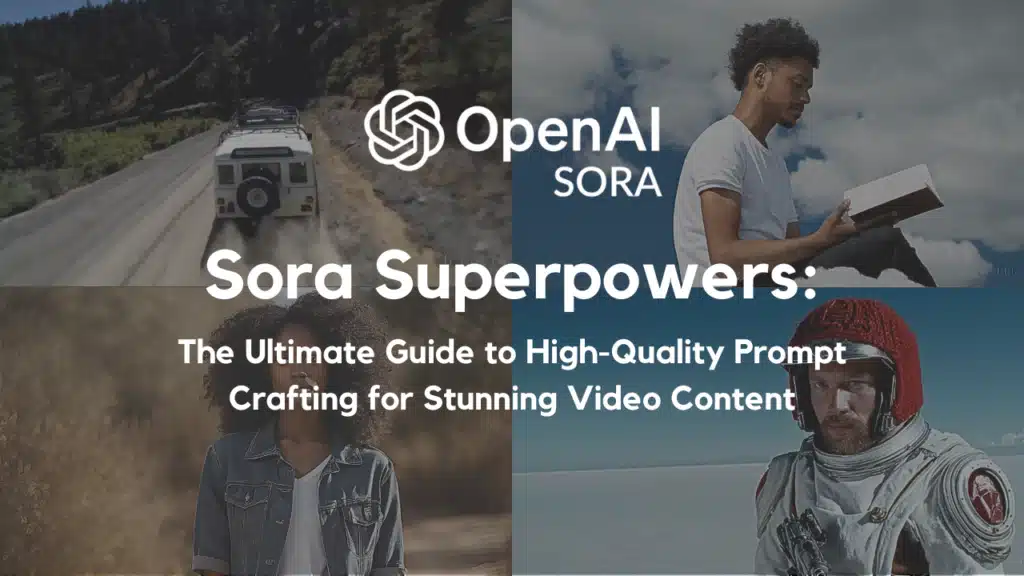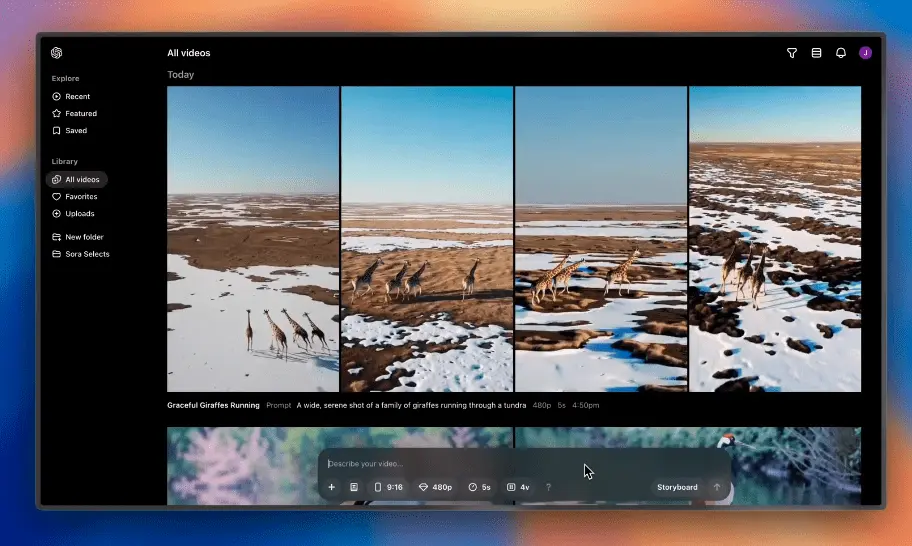How to Prompt Sora Effectively?

In the rapidly evolving field of AI-driven video generation, OpenAI’s Sora stands out as a pioneering tool that transforms textual prompts into dynamic, high-fidelity videos. However, harnessing Sora’s full potential requires more than just descriptive language—it demands a strategic approach to prompt crafting grounded in cinematic principles, clarity, and iterative refinement. Recent evaluations highlight both Sora’s impressive capabilities and its current limitations, including bias and inconsistencies in rendering complex scenes. By understanding Sora’s underlying technology, adopting best practices from expert prompt engineers, and learning from community-driven experiments, creators can significantly improve output quality. This article synthesizes the latest insights and news to offer a comprehensive, question‑driven guide on how to prompt Sora effectively, complete with detailed tips, illustrative examples, and cautionary advice.
What is Sora and why is effective prompting essential?
Understanding Sora’s core capabilities
Sora is OpenAI’s state‑of‑the‑art text‑to‑video generative model capable of producing up to one‑minute clips that maintain visual coherence and stylistic consistency across frames . By leveraging a diffusion-based architecture with Transformer‑style recaptioning, Sora interprets textual descriptions to create nuanced scenes featuring multiple characters, varied camera angles, and dynamic movements . Its feature set includes tools for looping, remixing, and re‑cutting existing footage, as well as style presets that align outputs with creative visions .
Impact of prompt quality on output
Because Sora’s video generation hinges entirely on the text prompt, vague or poorly structured inputs often yield generic or distorted results—especially for complex scenarios. Conversely, clear, detailed prompts can unlock richer visuals, smoother motion, and narrative cohesion, aligning outputs with the creator’s intent. Effective prompting therefore functions as the linchpin in achieving professional‑grade AI video content.
How should you structure your prompts for maximum clarity?
Start with a concise overview
Begin each prompt with a brief but vivid summary of the entire scene before diving into specifics. For example:
“A confident news anchor stands in a high‑tech studio, delivering a broadcast about emerging AI trends…”.
This overarching description sets the scene and helps Sora allocate visual focus appropriately.
Specify camera shots and movements
Incorporate cinematic language—such as “wide shot,” “medium close‑up,” or “tracking shot”—to guide framing and camera behavior. For instance:
“…the camera zooms in from a wide shot to a close‑up on the anchor’s face, highlighting expressive eye movements.” .
Detailing the desired shot sequence ensures narrative flow and maintains visual consistency.
Define lighting, color, and mood
Lighting and color palettes deeply influence a video’s tone. Use descriptors like “soft golden hour lighting,” “neon‑lit urban backdrop,” or “muted earthy tones” to convey atmosphere.
“Under soft golden hour lighting, the city skyline glows in warm amber hues…”.
Incorporate character details and actions
If characters are present, include their attire, emotional expressions, and actions.
“A female scientist in a white lab coat adjusts test tubes on a backlit console, her face illuminated by blue LED panels.” .
What cinematic techniques elevate your Sora prompts?
Framing and composition
Use compositional cues—such as “rule of thirds,” “leading lines,” or “symmetrical composition”—to enhance visual appeal.
“Framing the subject off‑center with the city skyline in the upper third of the frame creates depth.” .
Dynamic camera movements
Instruct Sora to simulate cinematic movements (e.g., “dolly in,” “pan left to right,” “crane shot ascending”).
“The camera dollies in smoothly as the protagonist approaches the ancient temple, then pans upward to reveal the towering columns.” .
Transitions and cuts
Articulate desired transitions—“crossfade,” “hard cut,” “match cut”—to control pacing and continuity.
“Transition with a crossfade from the bustling city street to the serene mountain vista.”.
How can you avoid common prompting pitfalls?
Overloading with too much detail
While specificity is valuable, excessively granular prompts can overwhelm Sora’s context window, leading to jumbled visuals . Strike a balance by focusing on the most salient elements and using follow‑up prompts to refine details.
Ambiguous language
Avoid vague terms like “nice,” “awesome,” or “interesting.” Instead, substitute concrete adjectives (e.g., “vibrant,” “ominous,” “tranquil”).
Poor: “A nice garden scene.”
Better: “A tranquil Japanese zen garden at dusk, with raked gravel patterns and softly glowing lanterns.” .
Ignoring Sora’s current limitations
Recent testing has shown that Sora still struggles with fast, intricate human movements and fine texturing in crowded scenes . Adjust expectations by focusing prompts on broader strokes rather than hyper‑realistic detailing when shaping complex sequences.
Unchecked bias and stereotypes
Investigations reveal that Sora can perpetuate social biases—such as gender role stereotyping and limited racial representation—when left unchecked. To mitigate this, explicitly prompt for diversity:
“Include three characters of different ethnicities engaging in a collaborative meeting around a conference table.” .
What best practices should you follow for iterative refinement?
Start with a base prompt and iterate
Begin with a simple version, evaluate the output, and incrementally add detail or adjust phrasing.
- Base: “A futuristic cityscape at night.”
- Refined: “A sprawling neon‑lit metropolis at night, with flying cars weaving between glass skyscrapers under a deep indigo sky.” .
Use version control for prompts
Keep track of prompt iterations and associated outputs. This enables you to revert changes and identify which modifications yield improvements.
Leverage community‑driven prompts
Explore repositories like GitHub gists or community forums where prompt engineers share their experiments and templates .Adapt well‑structured examples to your context, noting which elements consistently succeed.
Analyze failure cases
When Sora produces unsatisfactory results, inspect which parts of the prompt were ignored or misinterpreted. Refine by rephrasing ambiguous segments or breaking complex instructions into separate prompts.
How do real‑world examples illustrate effective prompting?
Case study: Cinematic teaser trailer
Prompt:
“A lone astronaut steps onto an alien planet’s red desert at sunrise. In a wide shot, the camera tracks backward as she gazes at distant mountains. She raises her visor, revealing determined eyes.” .
Outcome: Sora delivered a cohesive three‑shot sequence with smooth tracking, accurate color grading, and expressive facial detail.
Case study: Product showcase animation
Prompt:
“Close‑up of a sleek smartphone rotating on a reflective surface. Rotate the camera 360 degrees around the device, pausing briefly at each corner to highlight design features.” .
Outcome: The generated clip showcased consistent reflections, precise rotations, and branded lighting that accentuated contours.
Case study: Educational explainer
Prompt:
“Medium shot of a diagram on screen illustrating photosynthesis. Animate text labels appearing sequentially: ‘Sunlight,’ ‘Water,’ ‘Carbon Dioxide,’ and arrows indicating energy flow.”.
Outcome: Sora produced a clear, step‑by‑step animation with legible typography and smooth transitions.
What upcoming developments and community insights should you watch?
OpenAI’s ongoing research updates
OpenAI continues to refine Sora’s architecture and bias mitigation strategies, with research publications and platform updates expected throughout 2025 . Stay informed via the OpenAI Research blog.
Plugin and API expansions
Future Sora API endpoints may allow programmatic prompt tuning, batch generation, and direct integration into creative pipelines . Early adopters can anticipate enhanced tooling for prompt templating and version control.
Community‑built CustomGPT copilots
Prompt engineers have begun crafting CustomGPT copilots dedicated to Sora prompting, offering guided interfaces for constructing complex prompts without manual syntax . These solutions demonstrate the power of combining Sora with auxiliary AI agents.

How to incorporate advanced features?
How to integrate prompt chaining for dynamic narratives?
For interactive applications (e.g., game engines or storytelling apps), you can chain multiple Sora requests:
- User Choice: Generate a base scene.
- Dynamic Branching: Based on user input (“make it stormy” vs. “add birds”), issue a new Sora remix call.
- Assemble: Stitch resulting clips in your frontend timeline for a cohesive story.
How Can Metadata and Scene Descriptors Enhance Prompts?
- Embedded JSON Tags: Some users report success embedding lightweight JSON or YAML metadata in prompts to explicitly tag scene elements, e.g.,
json{ "scene": "forest", "time": "dusk", "characters": ["elf archer", "wolf"] } This can clarify structure and improve parsing accuracy .How Do You Incorporate Timing and Shot Instructions?
- Timeline Notation: Use minute‑second markers (“00:00–00:10 establishing shot of city skyline; 00:10–00:20 close‑up on protagonist”) to align generated clip segments with your storyboard.
- Frame‑Accurate Commands: If Sora supports frame‑level control, specify key frames (“at frame 75, camera pans left to reveal antagonist”) to synchronize action.
Conclusion
Mastering prompt engineering for Sora involves a blend of clear, concise language; structured templates; vivid sensory descriptions; and iterative refinement. By leveraging Sora’s advanced storyboard interface, multi‑modal inputs, and community‑driven templates, users can achieve cinematic‑quality videos that faithfully reflect their creative intent. At the same time, staying vigilant about potential biases and adopting inclusive prompting practices will help ensure that Sora’s outputs are both technically impressive and socially responsible. With an evolving feature set and a vibrant user ecosystem, effective prompting remains the key to unlocking Sora’s full potential.
Use Sora API in CometAPI
CometAPI provides a unified REST interface that aggregates hundreds of AI models—including Google’s Gemini family—under a consistent endpoint, with built-in API-key management, usage quotas, and billing dashboards. Instead of juggling multiple vendor URLs and credentials, you point your client at base url and specify the target model in each request.
Developers can access Sora API through CometAPI. To begin, explore the model’s capabilities in the Playground and consult the API guide for detailed instructions. Note that some developers may need to verify their organization before using the model.


